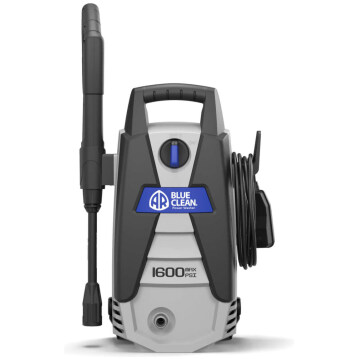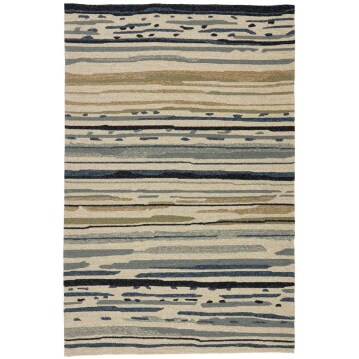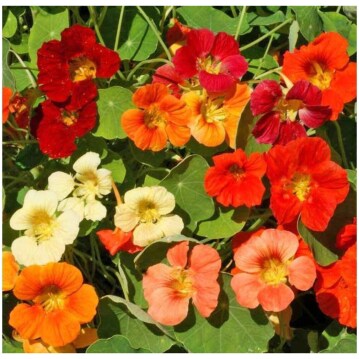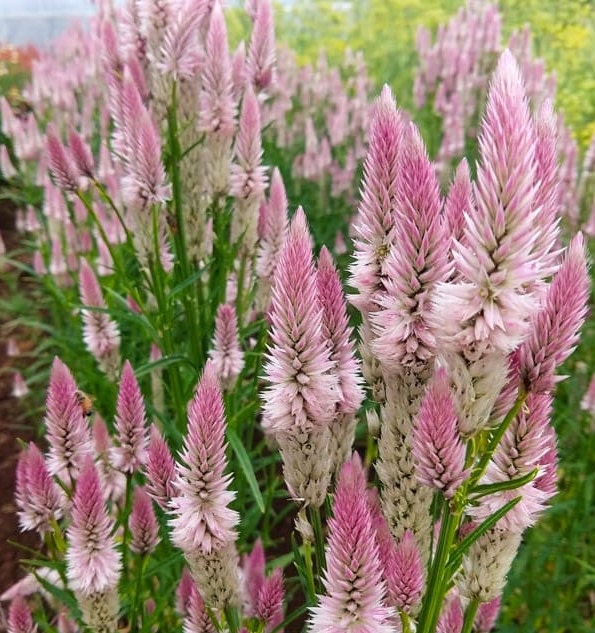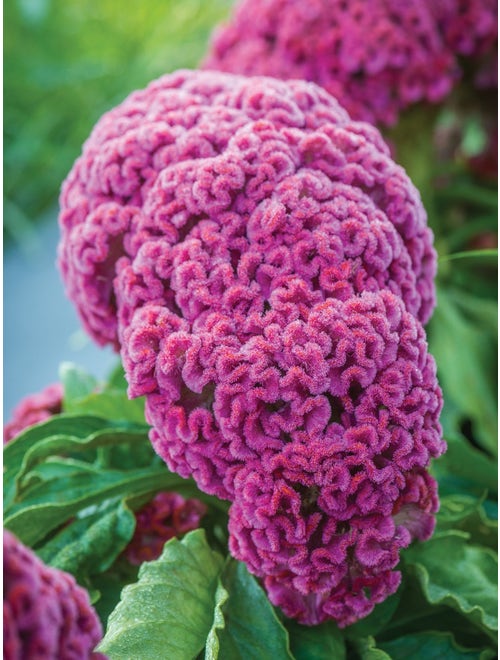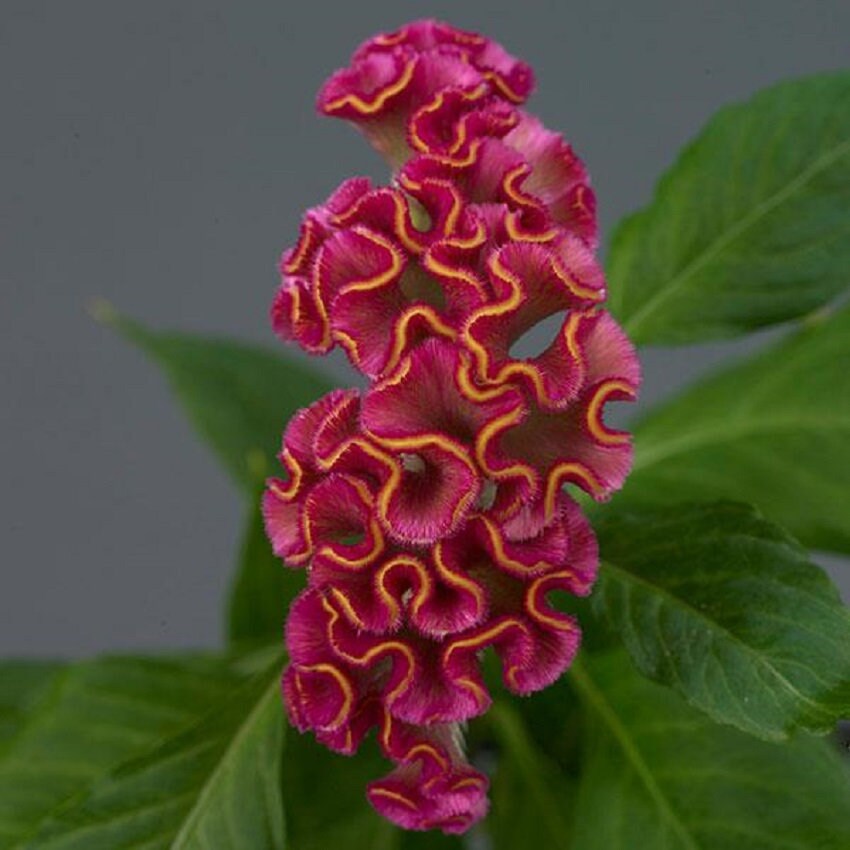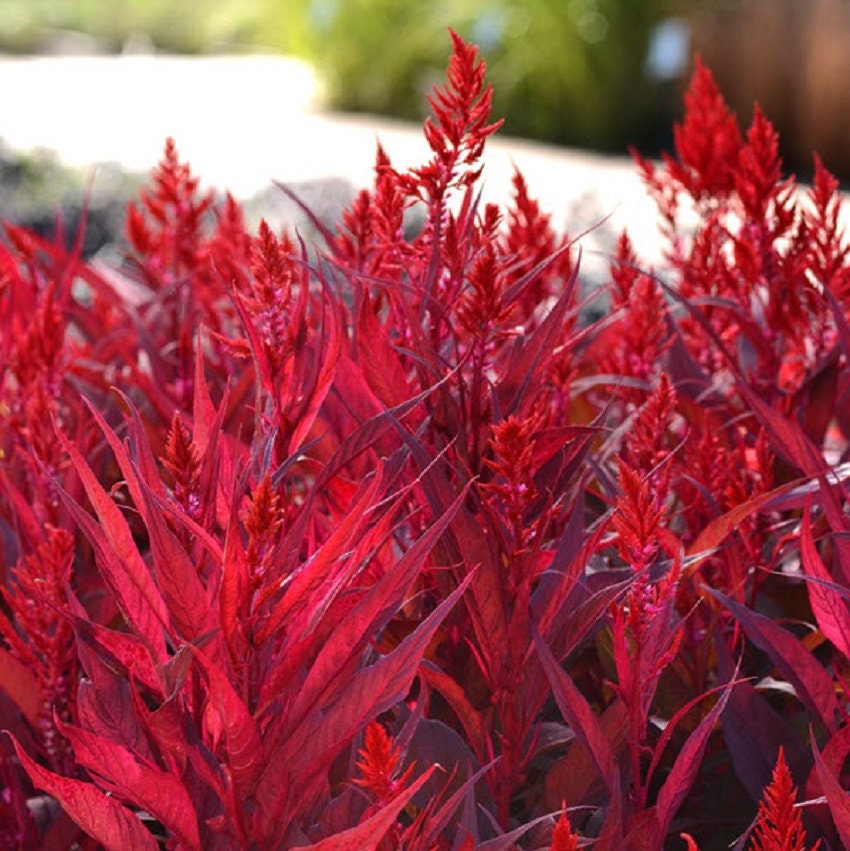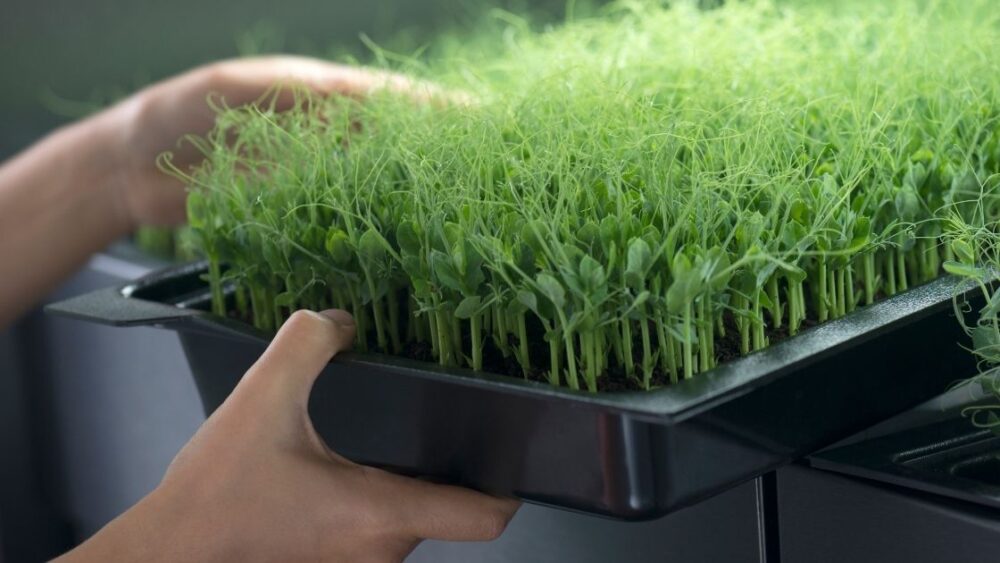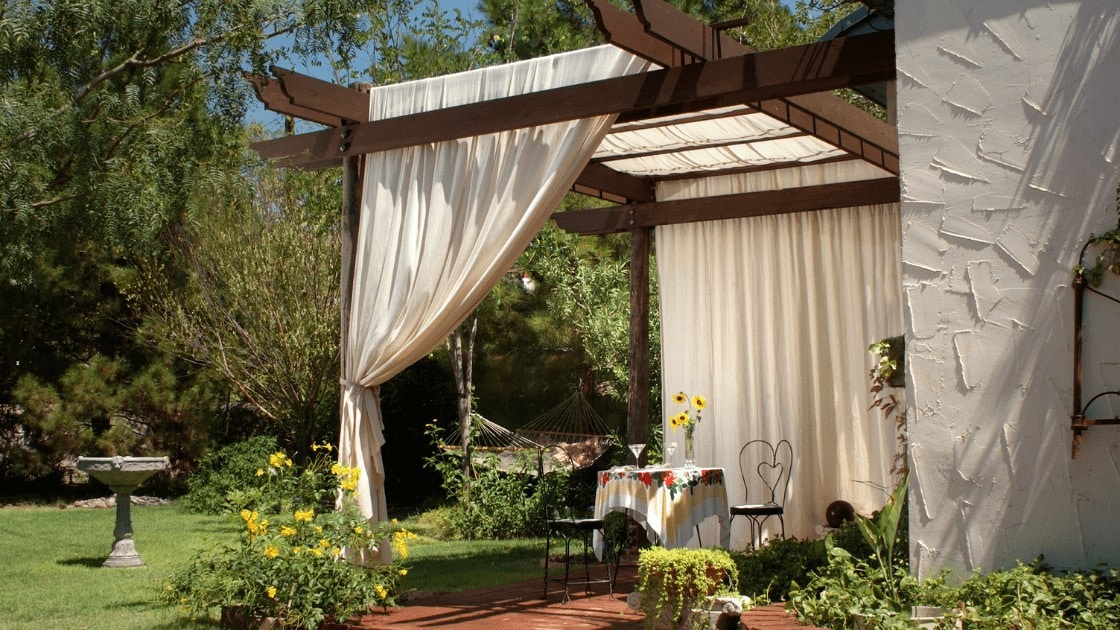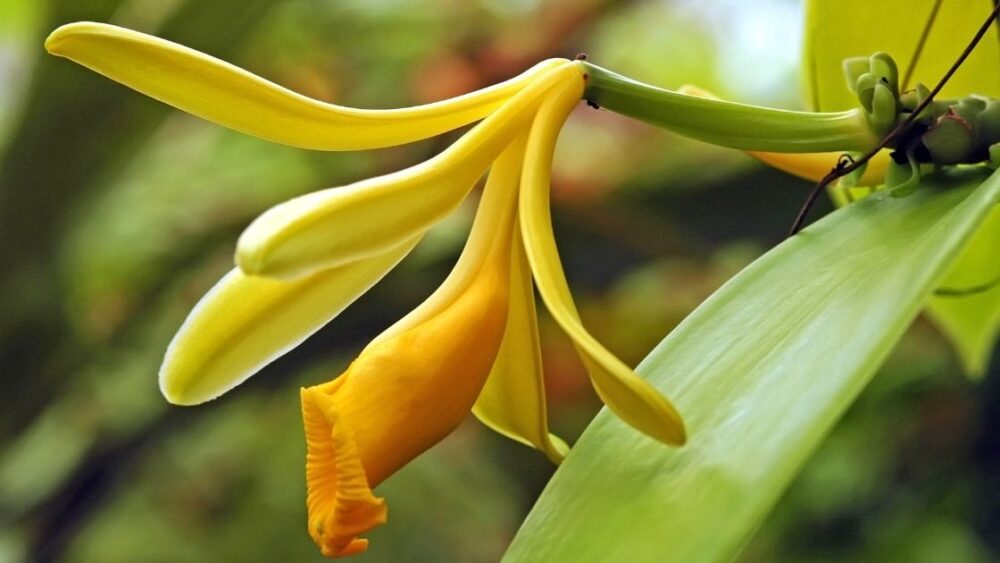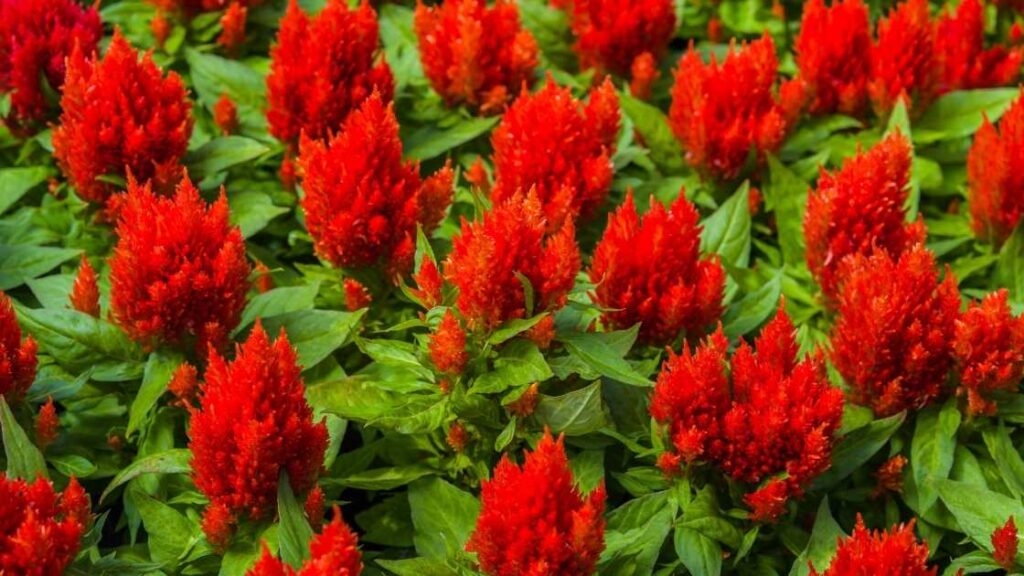
Celosias are beautiful plants with plume-like, crowned blooms that display an array of vibrant colors throughout the summer and early fall. In Greek, Celosia means “burning,” referring to its flame-like flower heads. This species, also known as woolflowers, is native to the Mediterranean or East Africa.
Celosia plants belong to the Amaranth family and are found in many Minnesota annual gardens due to their ease of care and diverse flower structures. This plant has edible leaves with a spinach-like flavor when young, but they turn bitter after flowering. In order to produce eye-pleasing flowers, Celosia plants need full sun, fertile soil, and well-drained soil. They are ideal for beginners because of their ease of cultivation. In this, you’ll learn more about Celosia plants, how to grow them, and how to care for them.
Are Celosias Easy to Care for?
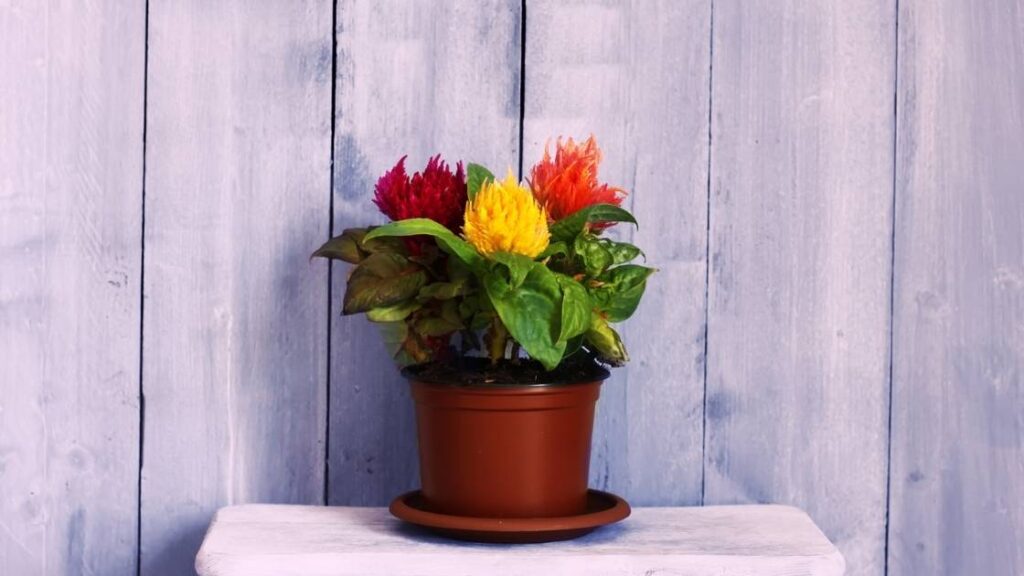
The care of celosias is relatively simple. It doesn’t matter if they are grown indoors or outdoors; Celosia plants are easy to maintain. In the summer, the garden center displays these drought-tolerant plants. Ideally, they need fertile, well-drained soil with 8 hours of full sun daily.
Browse our Affiliate Products
Also click here to view our affiliate selection of pots and planters and house plant articles:
Will my Celosia come back every year?
Celosias are annual plants rather than perennials. So you need to sow the seeds indoors before six weeks of spring to ensure that they will return every year. However, self-seeding may cause them to return each spring when they are outdoors.
For more information on other types of fall blooming plants, check out this article:
Popular Types of Celosia
On the basis of the structure of the flower, Celosia can be divided into three types: plumed, wheat-like, and cockscomb-like.
- Plumed varieties produce multiple flower stalks and flowers that look like feathers. Their height ranges from 8 to 24 inches.
- Wheat cultivars are similar to grain crops with a single stalk of flowers. Compared to plumed and cockscomb varieties, these cultivars are usually between 12 and 36 inches tall.
- Cockscomb cultivars tend to have large, heavy blooms resembling coral or brains, so staking is often necessary. Their height ranges from 12 to 36 inches.
Celosia Care

Celosia is relatively easy to grow, but a few factors must be considered. Make sure Celosia receives 6 to 8 hours of direct sunlight per day. Plants grow well in soil that is well-drained and nutrient-rich. Rely on a liquid plant food if it has been raining or the temperature has reached 95 degrees F or higher.
Common Names:
Common names for Celosia include:
- Red Fox
- Red Spinach
- Feather Cockscomb
- Plumed Cockscomb
- Woolflower
- Feathery Amaranth
- Wild Cockscomb.
Scientific name:
The woolflower is scientifically known as Celosia.
Growth Cycle:
Celosia is classified as ‘Annuals,’ meaning they mature in a year. The specimen will likely begin declining shortly after flowering, resulting in yellowed leaves and even basal rot. After this period, the specimen can be safely disposed of in a green waste bin.
Sun:
An ideal setting would be a location with morning or evening sunlight. Avoid shadowy areas as they are more prone to over-watering and crown rot (if watered from above).
It would be ideal to find a room in the house that is above 15 degrees Celsius and a minimum of three meters from a source of heat.
Plants should be placed at least two meters from a south-facing window or north, east, or west-facing windowsill. For foliage and root rot prevention, winter sunlight is essential.
Watering:
Celosia needs moist soil most of the time throughout the year. The soil should dry out in the top third between waterings to prevent prolonged droughts from reducing the flower’s lifespan.
There are several symptoms of underwatering for Celosia, including rapid flower loss and dry, crispy leaves. This is usually the result of forgetfulness, excessive sunlight, or too much heat.
The symptoms of overwatering for Celosia include yellowing, rotting, and a loss of buds and flowers. Between waterings, ensure the soil dries completely and prevents standing water from accumulating under the pot.
For more information on watering indoor/outdoor plants, check out this article:
Adult Size:
The size of Celosia can vary from dwarf varieties that grow only four to six inches tall to vigorous types that grow more than three feet high. Nurseries, garden centers, and stores carry young celosia plants in spring, and seeds are easy to grow.
Planting Zones:
Celosia is an eye-catching annual that makes a great addition to any garden. Although they are perennials in Zones 10 to 12, they are technically tender annuals.
For more information on planting zones, check out this site: USDA Plant Hardiness Zone Map
Weather Hardiness:
The Celosia plant is commonly grown as an annual but is winter hardy in zones 10 and 11 of the U.S. Department of Agriculture.
Propagation:
It also takes about 3-4 weeks to propagate Celosia from cuttings. Those leaves at the bottom half of the cutting should be removed after cutting 4-6 inches off the top of the cutting.
After removing the leaves from the cutting, place them in sufficient water to cover the area that was left uncovered. Transplanting it into soil begins once roots begin to grow.
Toxicity:
Since Celosias is nontoxic, it presents no danger to cats, dogs, or humans. There are no problems keeping the plants in any home.
Dormancy:
Dormancy periods, served during the winter months, are insufficient to produce flowers. Plants won’t be able to go dormant in locations that offer similar temperatures year-round, resulting in low spring growth.
Soil:
Celosia plants grow best in well-draining, loamy, organic soils. Seeds germinate better in warm soils.
To prepare the soil for cockscomb Celosia, add equal amounts of perlite, peat moss, and cow manure for drainage, moisture retention, and nutrient uptake. Plants produce more colorful plumes when they use these organic soil amendments.
Check out this product on amazon.com:
Bloom:
Plant celosias as annuals in your garden, and they will grow until frost. Providing the plants with good growing conditions and warm weather, the plants will bloom from July through September or October.
Celosia plants appear to have flames perched on top of their blooms. Among the celosia group, the cristata variety has the most unique appearance. This type of celosia flowers less (sometimes producing just one bloom at a time) because it grows larger than its counterparts.
Fertilization:
Fertilize Celosia monthly with a fertilizer containing more phosphorus than nitrogen after planting to encourage new blooms.
Celosia Common Problems
Water-stressed, poor soil and low light conditions cause Celosia plants to become infested with insects and fungi. The following are the most deadly and common problems.
Leaf spot
The leaves of plants with leaf spots have brownish-tan spots. As time goes on, tissue spots may turn into holes. Fungal leaf spot can kill a plant if it is allowed to spread too far and destroys enough plant tissue to prevent photosynthetic function.
If caught early enough, a copper fungicide can be used to treat leaf spots. To prevent leaf spots, increase air circulation, get more sunlight, and water the plant at the soil level. An excellent, cloudy day is the best time to spray any product on plants.
Click to check out Amazon’s copper fungicide:
Stem rot
In the soil, stem rot fungi live as dormant spores until the right environmental conditions activate them. Celosia plants are infected by this fungus near the soil and develop dark brown lesions that cover the stem entirely.
Pests
Celosia plants are most commonly attacked by aphids, nematodes, and spider mites. Celosia plants cannot reach maturity because nematodes attack their tender roots, preventing them from growing.
For more information on aphids, check out this article:
What to do if Your Celosia is Dying?
Celosia plants should be watered gently at the soil level if they die from lack of air circulation, sunlight, or excessive watering. Overwatering can also lead to stem and crown rot. Keep plants well-watered but do it infrequently.
Final Thoughts
There is no better choice than these flowers if you want colorful, low maintenance, virtually disease-free, and low maintenance. Your garden will glow radiance when you plant a cockscomb, a plumed variety, or spiky wheat celosia! As a bonus, you can dry this plant in the winter and enjoy it then!
